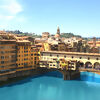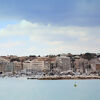10 Nights | Europe
About Sète, France
You will visit the following 9 places:

Gibraltar
Gibraltar is a British Overseas Territory on the south coast of Spain known for the Rock of Gibraltar (a major landmark of the region), a 426m limestone ridge at its centre. It is a very unique place for the curious traveller. You can take the time to explore the caves and tunnels. The inside of the rock is an absolute labyrinth with secret internal roads and tunnels four times longer than those on the surface. Military presence and security in this otherwise deserted area is strong but almost invisible. Also, at the Apes' Den (Queen's Gate) and in the area of the Great Siege Tunnels there is the rare opportunity to see semi-wild primates at close quarters. If you let them, the monkeys will be their captivating selves and behave in their everyday natural manner.

Alicante
Alicante is a port city on Spain’s southeastern Costa Blanca, and the capital of the Alicante province. The area around Alicante has been inhabited for over 7000 years. The first tribes of hunter gatherers moved down gradually from Central Europe between 5000 and 3000 BC. Some of the earliest settlements were made on the slopes of Mount Benacantil. By 1000 BC Greek and Phoenician traders had begun to visit the eastern coast of Spain, establishing small trading ports and introducing the native Iberian tribes to the alphabet, iron and the pottery wheel. By the 3rd century BC, the rival armies of Carthage and Rome began to invade and fight for control of the Iberian Peninsula. The Carthaginian general Hamilcar Barcaestablished the fortified settlement of Akra Leuka (meaning "White Mountain" or "White Point"), where Alicante stands today. The city is popular for its stunning beach views, nightlife, hotel resorts and festivals.

Seville
Seville is the artistic, cultural, and financial capital of southern Spain. It is the capital of the autonomous community of Andalusia and of the province of Seville. It is situated on the plain of the River Guadalquivir, with an average elevation of 7 metres (23 ft) above sea level. The inhabitants of the city are known as sevillanos (feminine form: sevillanas) or hispalenses, following the Roman name of the city, Hispalis. The tapas scene is one of the main cultural attractions of the city: people go from one bar to another, enjoying small dishes called tapas (literally "lids" or "covers" in Spanish, referring to their probable origin as snacks served on small plates used to cover drinks). Local specialities include fried and grilled seafood (including squid, choco (cuttlefish), swordfish, marinated dogfish, and ortiguillas), grilled and stewed meat, spinach with chickpeas, Jamón ibérico, lamb kidneys in sherry sauce, snails, caldo de puchero, and gazpacho. A sandwich known as a serranito is the typical and popular version of fast food.

Florence
Florence is the capital city of the Italian region of Tuscany and of the province of Florence. It is the most populous city in Tuscany, with 367,569 inhabitants (1,500,000 in the metropolitan area). The city lies on the River Arno and is known for its history and its importance in the Middle Ages and in the Renaissance, especially for its art and architecture. A centre of medieval European trade and finance and one of the wealthiest cities of the time, Florence is considered the birthplace of the Renaissance; it has been called the Athens of the Middle Ages. Florence is often known as the ''Jewel of the Renaissance''.

Marseille
Marseille, known in antiquity as Massalia, is the second largest city in France, after Paris, with a population of 852,395 within its administrative limits on a land area of 240.62 km2. The urban area of Marseille extends beyond the city limits with a population of over 1,420,000 on an area of 1,204 km2. 1,530,000 or 1,601,095 people live in the Marseille metropolitan area. Located on the southeast coast of France on the Mediterranean Sea, Marseille is France's largest commercial port and largest French city on the Mediterranean coast. Marseille is the capital of the Provence-Alpes-Côte d'Azur region, as well as the capital of the Bouches-du-Rhône department. Its inhabitants are called Marseillais.

Barcelona
Barcelona – Spain's enchanting capital, second largest and most populous city. It is a huge city that vibrates with life, and there’s certainly not another city in the country to touch it for its sheer style, looks or energy. It is one of the world's leading tourist, economic, trade fair and cultural centers, and its influence in commerce, education, entertainment, media, fashion, science, and the arts all contribute to its status as one of the world's major global cities. Barcelona is home to masterpieces of many great architects – the most famous of which is Antoni Gaudí.

Civitavecchia
Civitavecchia is a town and comune of the Metropolitan City of Rome in the central Italian region of Lazio. A sea port on the Tyrrhenian Sea, the name ''Civitavecchia'' means "ancient town". The modern city was built over a pre-existing Etruscan settlement. The massive Forte Michelangelo was first commissioned from Donato Bramante by Pope Julius II, to defend the port of Rome. The upper part of the "maschio" tower, however, was designed by Michelangelo, whose name is generally applied to the fortress. North of the city at Ficoncella are the Terme Taurine baths frequented by Romans and still popular with the Civitavecchiesi. The modern name stems from the common fig plants among the various pools. And also next to the town is the location of the cruise ship docks. All major cruise lines start and end their cruises at this location, and others stop for shore excursion days that allow guests to see Rome and Vatican sights, which are ninety minutes away.

Ajaccio

Sète
Sète is a major port in the southeast French region of Languedoc-Roussillon. Known as the Venice of Languedoc and the singular island (in Paul Valéry's words), it is a port and a seaside resort on the Mediterranean with its own very strong cultural identity, traditions, cuisine and dialect. It is also the hometown of artists like Paul Valéry, Jean Vilar, Georges Brassens, Gregory Del Piero, Hervé Di Rosa, Manitas de Plata, and Robert Combas.










